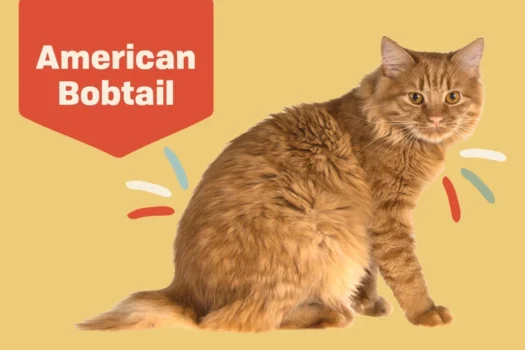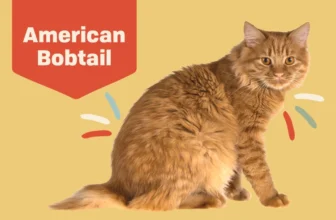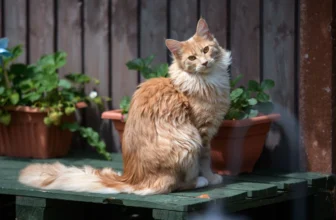As a pet owner, you want your American Bobtail to be happy and well-adjusted. However, achieving this requires more than just providing them with food and shelter. It also requires proper socialization and training. Maybe you’re wondering, “What does socialization mean?” or “Do I need to train my cat?” This article will answer these questions and provide you with step-by-step guidance on how to socialize and train your American Bobtail. By the end of this article, you’ll understand the importance of socialization and training on your cat’s well-being and how to create a happy and well-adjusted American Bobtail.
What Is Socialization?
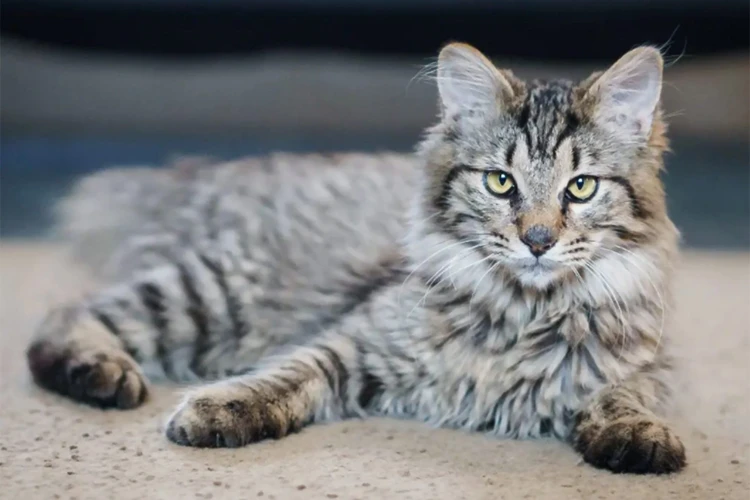
Socialization is the process of introducing a cat to different people, animals, and situations in order to help them feel comfortable and confident in their environment. This is done during the early stages of a cat’s life, usually between the ages of 2 and 7 weeks, when they are most receptive to new experiences.
Why Early Socialization Is Key
Early socialization is key to ensuring that your American Bobtail grows up to be a friendly, confident, and well-adjusted cat. Cats that are not socialized early on can become fearful and defensive of people, other animals, and new surroundings. This fearfulness can result in aggressive behavior and other behavioral problems later in life.
What Happens If You Don’t Socialize Your Cat?
If you don’t socialize your American Bobtail, they may become fearful and anxious in new situations. This fear can lead to aggression towards people and other animals, litter box problems, and other behavioral issues. A lack of socialization can also lead to your cat feeling stressed and unhappy in their environment.
How to Socialize Your American Bobtail
To socialize your American Bobtail, expose them to a variety of people, animals, and situations in a positive and controlled environment. Start by introducing them to family members and close friends, then gradually expose them to new people and animals. It is important to use positive reinforcement techniques such as treats and praise to reward your cat when they exhibit calm and friendly behavior.
You can also use toys and games to help socialize your American Bobtail. Interactive games such as chasing a feather toy or playing with a laser pointer can help them build confidence and trust with their human family.
If you have other pets in your household, it is important to introduce your American Bobtail to them slowly and carefully. This will help to prevent any aggression or fear-based behavior.
Early socialization is essential for the well-being of your American Bobtail. By exposing them to a variety of people, animals, and situations, you can help them become a happy, friendly, and well-adjusted part of your family. To learn more about how to train your American Bobtail, check out our article on positive reinforcement training.
Why Early Socialization Is Key
Early socialization is crucial for American Bobtails if you want them to become well-adjusted and happy adult cats. To explain it simply, socialization is the process of exposing your kitten to different experiences, people and other animals. Kittens that aren’t socialized early on may develop fear, aggression, or be generally anti-social. This is why providing opportunities for socialization when your kitten is between 3 to 9 weeks old is considered as important in creating a harmonious relationship between your American Bobtail and your family.
But why is early socialization so key?
During their early weeks of life, kittens are like sponges – they absorb everything around them. This is why exposing them to different experiences is important – it helps them learn that different things in the world are not scary. Without proper socialization during this critical period, kittens may grow up to be timid or frightened, which can lead to aggressive behavior or other issues.
When you expose your American Bobtail kitten to different environments, people, and animals, you’re essentially preparing them for a lifetime of experiences. Kittens that are exposed to a variety of sights, sounds, and textures are more likely to be friendly and accepting of these things in their environment when they encounter them as adults.
If you want to raise a well-adjusted and happy American Bobtail, it is crucial to socialize them early on. This can prevent future behavioral issues such as aggression, fear, and anti-social behavior from cropping up, leading to a harmonious relationship with your pet.
Internal link: Trainability is another crucial aspect of raising a well-adjusted American Bobtail.
What Happens If You Don’t Socialize Your Cat?
Cats that are not socialized can become fearful, anxious, and aggressive in new situations. They may become easily frightened by unfamiliar people, noises, and experiences. This can limit their ability to enjoy life to the fullest and can lead to problematic behaviors. Without socialization, even previously friendly cats may begin to avoid human interaction altogether, and may even become feral.
One of the most significant consequences of not socializing your American Bobtail is aggression. Aggression towards other cats, dogs, or humans can be an issue in cats who have not been socialized. If your cat was not introduced to other pets or people when it was young, it’s common for them to be aggressive in unfamiliar situations, and may react negatively to any new or different stimuli.
Cats, both domesticated and feral, are instinctively afraid of unfamiliar stimuli. When cats are not socialized, they experience anxiety and stress when exposed to new sounds, smells, or surroundings. This can lead to anxiety-related behavior problems, such as scratching or spraying, or potentially serious health issues like eating disorders or aggression.
Additionally, cats that are not socialized may have issues with using litter boxes. Cats that haven’t been socialized may be afraid or unable to use the litter box, which can lead to urinary tract infections, behavioral problems, and general discomfort.
If you have an American Bobtail that has not been socialized, it is important to start as soon as possible. Introduce new stimuli gradually, and use positive reinforcement training to build your cat’s self-confidence. Remember that every cat is different, and it may take time for your cat to adjust. With patience and dedication, you can help your American Bobtail become a happy, well-adjusted pet that is a joy to be around.
How to Socialize Your American Bobtail
Socializing your American Bobtail is an important process that should start early in its life to make sure it adjusts to different environments and people. Here are some tips to help you socialize your American Bobtail:
1. Expose them to different situations
One of the best ways to socialize your American Bobtail is to expose them to different situations, noises and environments from an early age on. This can include visits to the vet, travel, car rides or meeting other animals. By doing this, your cat will learn how to cope with these situations in a calm and relaxed manner.
2. Introduce them to people
It’s important to introduce your American Bobtail to people from an early age on. Introduce them to different people with different backgrounds, ages, and appearances. Start by inviting family and friends over to meet your cat. Make sure they are gentle and kind to your cat to ensure a positive experience.
3. Encourage playtime
Playtime is an excellent way to socialize your American Bobtail. Play with your cat regularly, and encourage your family members to do so as well. This increases the bond between your cat and your family and also helps your cat learn how to interact with humans.
4. Reward Good Behaviour
Positive reinforcement is a highly effective tool when it comes to socializing your American Bobtail. Reward good behavior with treats, pets, or playtime. Your cat will quickly learn what behaviors are positive and will continue to do them.
5. Gradual Exposure
It’s important to introduce new experiences gradually to your American Bobtail. Start with small steps and build up the experiences over time. Don’t force your cat into any situations that could be traumatic or stressful.
By socializing your American Bobtail, you are setting it up for a happy and well-adjusted life. It is important to start the process early and to be patient and consistent with your efforts. By following these tips, you can create a positive experience for your cat and ensure they are comfortable in any situation.
The Importance of Training
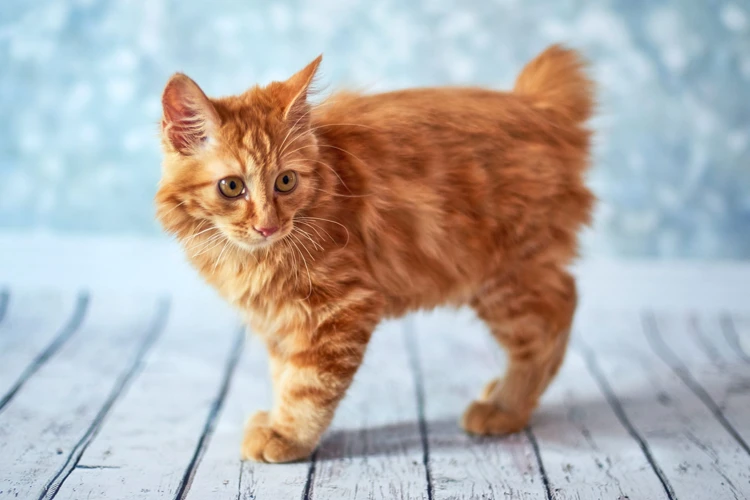
Training your American Bobtail is crucial for ensuring they live a happy and well-adjusted life. Training not only helps to prevent behavior issues but also strengthens the bond between you and your furry friend. By teaching your cat basic commands, you can establish yourself as the leader of the pack and make sure they respect your authority.
Training your American Bobtail can help prevent a lot of common behavior issues such as aggression, anxiety, and litter box problems. By training your cat to behave appropriately, you can avoid frustration and stress for both you and your cat. Another reason to train your cat is to keep them mentally stimulated. Cats are intelligent creatures that thrive on mental stimulation, and training provides an excellent opportunity for them to learn new things and keep their minds active.
There are many different kinds of training that you can do with your American Bobtail. One type of training that works well for most cats is trick training. Trick training involves teaching your cat to perform simple commands such as sit, stay, and come. You can also teach your cat more complex tricks like shaking hands or playing dead. Other types of training include leash training, which allows you to take your cat for walks outside, and clicker training, which is a positive reinforcement technique that can be used to teach a variety of behaviors.
Training your American Bobtail can be a fun and rewarding experience. One important thing to keep in mind is that cats are highly independent animals, so training should always be done in short sessions of a few minutes rather than long, drawn-out sessions. You should also use positive reinforcement techniques, such as treats and praise, to reward your cat for good behavior. It’s important to start training your cat as early as possible, but even older cats can learn new tricks with patience and persistence.
Don’t forget that training your American Bobtail is an ongoing process that requires time and dedication from both you and your cat. With the right approach, however, you can create a happy and well-adjusted cat that will provide love and companionship for many years to come.
Why You Should Train Your American Bobtail
Training your American Bobtail is essential for their overall well-being and happiness. Not only does training help build a strong bond between you and your pet, but it can also prevent behavioral problems from arising.
Preventing Behavioral Issues: Cats are creatures of habit, and training helps them learn their boundaries and what is expected of them. By establishing a routine and positive behavior reinforcement, you can prevent problems such as aggression or anxiety.
Bonding with Your Pet: Training sessions offer an opportunity for you to spend quality time with your American Bobtail. During these sessions, you can strengthen your bond and build trust with your pet.
When you train your American Bobtail, it can also help you identify any potential health issues they may be experiencing. For example, if your cat is not responding to training, it could be a sign of an underlying health problem that needs to be addressed.
Some training activities you can consider for your American Bobtail include obedience training, trick training, and agility training. Trick training, in particular, can be a fun way to keep your American Bobtail engaged and mentally stimulated.
Training your American Bobtail is crucial for maintaining a happy and healthy relationship with your pet. By establishing positive behavior patterns and engaging in frequent training sessions, you can help prevent behavioral problems and deepen your bond with your kitty. So don’t hesitate to start training your American Bobtail today!
For more information about the comparison between American Bobtails and other feline breeds, check out our article “Intel: American Bobtails vs Other Feline Breeds”. If you’re interested in trick training, read our article “Trick Training Ideas for American Bobtails”.
What Kind of Training Should You Do?
Training your American Bobtail can be a fun and rewarding experience for both you and your cat, but what kind of training should you do? The first thing to keep in mind is that all cats are individuals, and different cats may respond better to different types of training. However, there are some general training tips that can be useful for most American Bobtails.
One important type of training is obedience training. This can include teaching your cat to respond to basic commands, such as “come” and “sit.” It can also include teaching your cat not to do certain things, such as scratch the furniture or jump on the counter. Obedience training can help establish boundaries and rules for your cat, which can ultimately reduce stress and enhance the bond between you and your American Bobtail.
Another important type of training is socialization training. This involves exposing your cat to different people, animals, and environments in a safe and positive way. Socialization training can help prevent fear and aggression towards strangers or other animals, and can also help your cat adjust to new situations more easily.
Interactive play is another important aspect of training for American Bobtails. These cats are known for their high energy and love of play, so providing them with toys and playing with them regularly can help keep them physically and mentally stimulated. Be sure to choose safe toys that are appropriate for your cat’s size and activity level, and supervise any playtime to prevent accidents.
Finally, you may want to consider clicker training for your American Bobtail. Clicker training involves using a clicker to signal to your cat when they have done something correctly, followed by a reward. This type of training can be used to teach your cat new tricks and behaviors, and can be a fun bonding experience for both of you.
The key to successful training for American Bobtails is to keep it positive and fun. Remember to be patient and consistent, and don’t force your cat to do anything that makes them uncomfortable. With the right approach, training your American Bobtail can be a rewarding and enjoyable experience for both you and your furry friend.
How to Train Your American Bobtail
Training your American Bobtail should be a positive experience for both you and your cat. Here’s how you can train your American Bobtail effectively:
Start with Basic Commands
Training should always start with basic commands, such as “sit,” “stay,” “come,” and “down.” These commands help establish you as the alpha and help your cat understand what is expected of them. Start with one command at a time and reward your cat with treats or affection when they successfully execute the command. Consistency is key here.
Use Positive Reinforcement
Positive reinforcement is the best way to train your American Bobtail. Reward them for good behavior with treats, affection, or playtime. Punishment doesn’t work well with cats and can lead to fear, aggression, and anxiety. Focus on what your cat is doing right and reinforce that behavior.
Train in Short Sessions
Cats have short attention spans, so training sessions should be kept short, ideally under 10 minutes. Work on one command at a time and gradually increase the length of the sessions as your cat becomes more comfortable with training.
Be Patient and Persistent
Training takes time, and not all cats will learn at the same pace. Be patient and keep at it, even if your cat doesn’t seem to be catching on right away. If they’re struggling with a particular command, go back to an easier command and work your way back up. Don’t get frustrated or angry with your cat, as this can undo any progress you’ve made.
Be Consistent
Consistency is key when it comes to training. Use the same command words and hand signals each time and reward good behavior every time. Don’t confuse your cat by using different commands or signals for the same behavior. Inconsistency will lead to confusion and make training more difficult.
Keep it Fun
Training sessions should be fun and engaging for your American Bobtail. Use toys, treats, and affection to keep your cat interested and motivated. Make sure to end each session on a positive note, with your cat feeling rewarded and eager for the next training session.
By following these tips, you can effectively train your American Bobtail and teach them good behavior. Remember to be patient, consistent, and positive, and you’ll have a well-trained and happy cat.
Common Behavioral Issues in American Bobtails
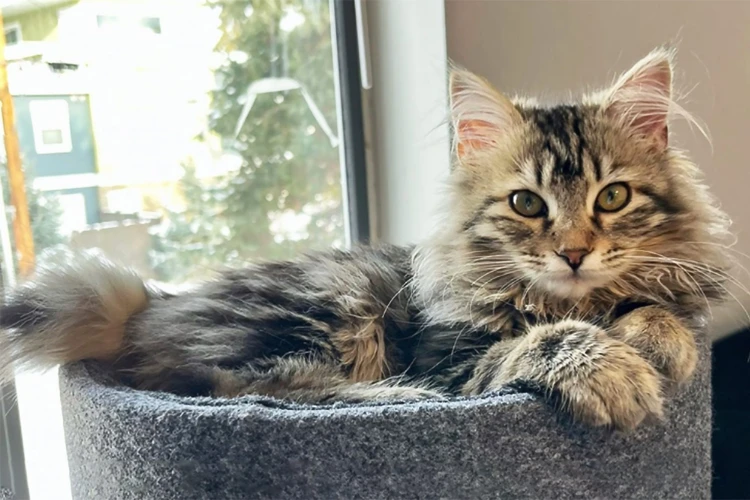
As with any breed of cat, American Bobtails can develop behavioral issues that can be challenging for their owners to address. It’s important to understand that such problems are not unique to this particular breed, but American Bobtails have their own set of specific challenges. In this section, we will discuss some of the most common behavioral issues that American Bobtail owners may encounter, and provide guidance on how to address them.
Aggression: While American Bobtails are generally known for their friendly and social personalities, they can become aggressive in certain situations. This can be due to a variety of factors, including fear, stress, or territorial behavior. If your American Bobtail becomes aggressive, it’s important to address the issue immediately to prevent it from escalating. Start by identifying the trigger and removing your cat from the situation. Then, work on desensitizing your cat to the trigger using positive reinforcement training techniques.
Anxiety and Stress: American Bobtails can experience stress and anxiety just like any other cat. This can be caused by changes in their environment, such as a move to a new home or the introduction of a new pet. Signs of anxiety may include excessive meowing, hiding, or avoiding contact with humans. To help your American Bobtail cope with stress and anxiety, create a safe and comfortable space for them where they can retreat when they need to. Additionally, consider using pheromone sprays or diffusers to help promote relaxation and calmness.
Litter Box Problems: Litter box problems can be a common issue for American Bobtail owners. This can manifest as a refusal to use the litter box, or as frequent accidents outside of the box. Proper litter box hygiene is important in preventing this issue, but it can also be caused by other factors, such as a dislike for the type of litter being used or an underlying medical issue. If your American Bobtail is having litter box problems, consult with your veterinarian to rule out any medical issues first, then work on modifying the litter box setup or type of litter being used.
Solutions to Behavioral Issues: The key to addressing any behavioral issue in your American Bobtail is to identify and address the underlying cause. This may involve consulting with your veterinarian or a professional animal behaviorist to develop a behavior modification plan. It’s important to approach these issues with patience and consistency, and to use positive reinforcement techniques to promote good behavior. Remember, punishment or negative reinforcement can actually exacerbate the problem, and ultimately prevent progress from being made.
With time and effort, virtually any behavioral issue in your American Bobtail can be addressed using a combination of behavior modification techniques and patience. Remember to stay dedicated to creating a happy and well-adjusted cat, and the results will likely be well worth it.
Aggression
One of the most concerning behavioral issues that American Bobtails can develop is aggression. This can manifest in different ways, such as growling, hissing, biting, scratching, or even attacking their owners or other pets in the household. It is important to understand that aggression is not a normal behavior for a well-socialized and trained cat, so if you notice any signs of aggression in your Bobtail, it is crucial to address it promptly.
Causes of Aggression
There can be many reasons why an American Bobtail may become aggressive, ranging from underlying medical conditions to environmental stressors or learned behavior. For instance, your cat may lash out if they feel threatened, afraid, or in pain, or if they have not been properly trained to interact with humans or other animals. It is also possible that your Bobtail’s aggression is related to certain triggers, such as sudden noises, movements, or changes in routine.
Signs of Aggressive Behavior
Recognizing the signs of aggression in your American Bobtail is critical to preventing further escalation and addressing the underlying causes. Some of the most common signs of aggression in cats include dilated pupils, arched back, flattened ears, raised fur, growling, hissing, swatting, biting, scratching, or attacking. Your Bobtail may also exhibit aggressive behavior during feeding times or play sessions, which can be a sign of food aggression or overstimulation.
Treatment and Management
If your American Bobtail is showing signs of aggression, it is important to seek professional guidance from a veterinarian or animal behaviorist. They can help you determine the underlying causes of the behavior and provide you with individualized training and management strategies. Depending on the severity and type of aggression, your cat may benefit from desensitization and counterconditioning techniques, medication, or changes to their environment and daily routine.
Prevention Strategies
Preventing aggression in American Bobtails involves early socialization and proper training. By exposing your cat to various people, places, and experiences from a young age, you can help them develop positive associations and cope with stressors in a healthy way. Additionally, teaching your Bobtail basic obedience commands, such as “sit,” “stay,” and “come,” can help you control their behavior and redirect any unwanted aggression. It’s also essential to provide your cat with enough mental and physical stimulation, as a lack of exercise and play can lead to pent-up frustration and aggression.
Anxiety and Stress
Cats, like humans, can experience anxiety and stress. It’s essential to recognize the signs of anxiety in your American Bobtail so you can address the problem before it becomes a serious issue. Common signs of stress in cats include excessive grooming, urine spraying or not using the litter box, hiding, and aggression.
Anxiety Triggers
Some common sources of anxiety for cats are changes in their environment such as moving to a new house, a change in their routine, new pets or people in the house, or even loud noises like fireworks or thunderstorms. Physical health problems can also cause anxiety or stress, so it’s important to rule out any underlying medical concerns with your veterinarian.
How to Reduce Anxiety and Stress
To reduce anxiety and stress in your American Bobtail, make sure they have a quiet and comfortable space where they can retreat when they need some alone time. Provide plenty of interactive toys and playtime to keep them mentally stimulated, and ensure their litter box is always clean.
Providing your cat with plenty of vertical spaces like cat trees, shelving, or perches can also help reduce anxiety as it gives them additional space to climb and observe their surroundings.
You can also try using calming pheromone sprays or plugins, which mimic the natural pheromones that cats release, to help soothe your cat. These products can promote relaxation and help reduce aggression and other problem behaviors.
When to Talk to Your Vet
If your American Bobtail’s anxiety or stress is severe, causing significant disruption to their daily life, or if they are experiencing physical symptoms like vomiting or diarrhea, it’s time to schedule a visit with your veterinarian.
Conclusion
Anxiety and stress can greatly impact your American Bobtail’s quality of life. By recognizing the signs of anxiety and taking steps to reduce triggers, you can create a happy and healthy home for your furry friend. If you’re concerned about your cat’s anxiety, always seek advice from a qualified veterinarian.
Litter Box Problems
One of the most common behavioral issues that American Bobtail owners face is litter box problems. This can include refusing to use the litter box, going outside of the box, or using other areas of the house as a bathroom. While it can be frustrating for owners, it’s important to address the issue as soon as possible to prevent it from becoming a habit.
Causes of Litter Box Problems
There are several reasons why your American Bobtail may be having issues with using the litter box. One common cause is a dirty or smelly litter box. Cats have a strong sense of smell, and if the litter box is not cleaned regularly, they may refuse to use it. Another cause can be a medical issue, such as a urinary tract infection or bladder stones, which can cause pain or discomfort while using the litter box.
Preventing Litter Box Problems
The best way to prevent litter box problems is to make sure that the litter box is clean and inviting for your cat. Clean the box at least once a day, and replace the litter entirely every few days. Make sure that you are using a litter that your cat likes, and consider trying different types to see which one your cat prefers.
It’s also important to have enough litter boxes in your home. The general rule is to have one litter box per cat, plus one extra. This ensures that your cats have enough space to do their business and reduces the chance of territorial issues.
Dealing with Litter Box Problems
If your American Bobtail is already having litter box problems, there are several steps you can take to correct the behavior. First, take your cat to the vet to rule out any medical issues. If the problem is not medical, try changing the litter or litter box location to see if that helps. You can also try using treats or positive reinforcement to encourage your cat to use the litter box.
Conclusion
Litter box problems can be frustrating for American Bobtail owners, but they are usually fixable. By keeping the litter box clean and inviting, providing enough litter boxes, and addressing the issue promptly, you can prevent or correct litter box problems and keep your cat happy and healthy.
Solutions to Behavioral Issues
If your American Bobtail is exhibiting behavioral issues, there are several solutions you can try to help improve their behavior and overall happiness. Here are some recommendations:
Aggression: If your cat is displaying aggressive behavior, it’s important to address the issue as soon as possible. One solution is to redirect their attention to a toy or other object when they are exhibiting aggressive behavior towards a person or another animal. Consult your veterinarian or a professional animal behaviorist for more guidance on how to address aggressive behavior in cats.
Anxiety and Stress: Cats can experience anxiety and stress from various factors such as changes in their environment or routine. To help alleviate anxiety and stress in your American Bobtail, provide them with plenty of toys and playtime to keep them stimulated and engaged. You can also provide them with a comfortable and secure space to retreat to when they are feeling anxious or stressed.
Litter Box Problems: Litter box problems can be a frustrating issue for cat owners. A few solutions to this problem include ensuring that the litter box is cleaned regularly, providing multiple litter boxes if you have multiple cats, and experimenting with different types of litter to find what your cat prefers.
Solutions to Behavioral Issues: It’s important to address any behavioral issues your cat may be exhibiting, whether it’s aggression or anxiety, as soon as possible. Consult with your veterinarian or a professional animal behaviorist for advice tailored to your cat’s specific needs.
By addressing and resolving behavioral issues, you can help your American Bobtail live a happier and more well-adjusted life. Remember that each cat is unique and may require individualized attention and care to address specific behavioral issues.
Creating a Happy and Well-Adjusted American Bobtail
As a cat owner, your ultimate goal is to have a happy and well-adjusted American Bobtail. The key to achieving this is through proper socialization and training. However, there are also other factors to consider to ensure your cat’s overall well-being.
The Role of Socialization and Training
Socialization and training play a crucial role in the development of your American Bobtail’s behavior. Through socialization, your cat will learn how to interact with other animals and humans in a positive manner. This will help prevent aggressive behavior and anxiety in both the short and long term. Training goes hand-in-hand with socialization, as it teaches your cat important behaviors and reinforces positive habits.
Other Factors That Can Affect Your Cat’s Happiness
Aside from socialization and training, there are other factors that can impact your cat’s happiness. For instance, providing your American Bobtail with a healthy and balanced diet is crucial to their overall health and satisfaction. Make sure to consult with your vet and choose food that meets their nutritional needs. Additionally, providing your cat with plenty of playtime and exercise is crucial for their physical and mental well-being.
Another crucial factor is providing a safe and comfortable environment. Your American Bobtail should have access to a comfortable and clean litter box, adequate space to move around and play, and a cozy place to sleep. Additionally, make sure to keep your home safe by removing any potential hazards, such as toxic substances or sharp objects.
Conclusion
Creating a happy and well-adjusted American Bobtail requires proper socialization and training as well as attention to other factors such as diet, exercise, and a safe environment. By providing your cat with the necessary tools and care, you can ensure that they will live a happy and fulfilling life as a beloved member of your family.
The Role of Socialization and Training
The role of socialization and training cannot be overstated when it comes to American Bobtails. Early socialization and training are essential to ensure that your cat grows up to be a happy and well-adjusted member of your family. Socializing your cat means exposing them to a variety of people, pets, and situations, so they learn to feel comfortable and confident in new environments. Training, on the other hand, involves teaching your cat specific behaviors and commands that can make your life easier, such as coming when called or not scratching the furniture.
Why Socialization is Important
Early socialization is key for American Bobtails. These cats are known for their affectionate and friendly personalities, but without proper socialization, they may become shy, skittish, or even aggressive. By exposing your cat to new people, pets, and experiences from a young age, you can help them develop the social skills they need to navigate the world around them.
Why Training is Important
While socialization is important, training is also essential for American Bobtails. These cats are naturally intelligent and eager to please, which makes them easy to train. Whether you want to teach your cat basic obedience commands or more advanced tricks, training can help strengthen the bond between you and your pet, as well as provide mental stimulation and exercise.
The Role of Socialization and Training in Behavior Issues
Socialization and training can also play a significant role in addressing behavior issues in American Bobtails. Cats that have not been socialized or trained may be more prone to aggression, anxiety, and litter box problems. By providing your cat with early socialization and training, you can reduce the likelihood of these issues developing and help your cat learn appropriate behaviors.
Other Factors That Can Affect Your Cat’s Happiness
While socialization and training are essential for a happy and well-adjusted American Bobtail, there are other factors that can impact how content and satisfied your pet will be. Providing your cat with a healthy diet, regular exercise, and plenty of love and attention can all contribute to their overall happiness and well-being.
Early socialization and training are crucial for American Bobtails. By exposing your cat to a variety of people, pets, and experiences, as well as teaching them specific behaviors and commands, you can help them become happier, more confident, and more well-adjusted members of your family. So, take the time to socialize and train your American Bobtail, and enjoy the benefits of having a happy and well-behaved pet.
Other Factors That Can Affect Your Cat’s Happiness
Beyond socialization and training, there are a number of other factors that can play a crucial role in keeping your American Bobtail happy and well-adjusted. These include their physical well-being, environment, and psychological needs.
Physical Needs: As with all cats, ensuring that your American Bobtail is fed a healthy diet and gets enough exercise is essential for their overall happiness. Obesity and poor nutrition can lead to numerous health problems, while a lack of exercise can make your cat overweight and lethargic. Providing your cat with plenty of playtime and opportunities to explore can help ensure they get the exercise they need.
Environment: Your American Bobtail’s environment can also have a big impact on their well-being. Providing them with a comfortable place to rest, play, and explore is important for their happiness. Make sure they have access to plenty of toys and scratching posts to keep them mentally stimulated, and consider the layout of your home when deciding where to place their food, water, and litter box.
Psychological Needs: In addition to their physical needs, American Bobtails also have psychological needs that must be met in order for them to be happy and healthy. Cats are social animals and thrive on interaction with their owners, so spending time playing and cuddling with your pet is an important part of their psychological well-being. Providing your cat with a safe and secure space where they can retreat when they feel anxious or stressed is also important, such as a cozy cat bed or cat tree.
Taking a holistic approach to your American Bobtail’s well-being is essential for their happiness and longevity. By providing them with the right socialization and training, as well as meeting their physical and psychological needs, you can help ensure that they lead a happy and fulfilling life as part of your family.
Conclusion
In conclusion, socialization and training are essential for the well-being of your American Bobtail. Early socialization provides your cat with the skills needed to navigate new environments and handle interactions with humans and other animals. Training helps prevent behavioral issues and strengthens the bond between you and your pet.
To ensure a happy and well-adjusted American Bobtail, it’s important to start socializing and training as early as possible. Incorporate positive reinforcement techniques in your training sessions and provide plenty of opportunities for your cat to interact with new people and animals.
Be aware of common behavioral issues such as aggression, anxiety, and litter box problems. With the right training and correction techniques, these issues can be resolved. Remember, a happy and well-adjusted cat is a product of good socialization and training, combined with other factors such as diet, exercise, and veterinary care.
By taking the time to socialize and train your American Bobtail, you are setting them up for a happy and fulfilling life. So remember to be patient, consistent, and always use positive reinforcement. Your cat will thank you for it with their love and affection.
Frequently Asked Questions
1. Can American Bobtails be trained like dogs?
Yes, American Bobtails are highly intelligent and can be trained using positive reinforcement techniques, just like dogs.
2. How can socialization help my American Bobtail?
Early socialization can help your American Bobtail become more comfortable around unfamiliar people, pets, and environments. It can also prevent aggressive or anxious behavior.
3. What if I adopt an adult American Bobtail who wasn’t socialized as a kitten?
It’s never too late to start socializing your cat. However, adult cats may require more time and patience to acclimate to new experiences and people.
4. Can I train my American Bobtail to walk on a leash?
Yes, many American Bobtails can be trained to walk on a leash using a harness and positive reinforcement techniques.
5. How can I address litter box problems in my American Bobtail?
Make sure you have enough litter boxes for each cat in your home, and keep them clean. If your cat still has issues, there may be a medical or behavioral problem that you should address with your veterinarian.
6. Should I use punishment to train my American Bobtail?
No, punishment can create fear and aggression in cats. Positive reinforcement and redirection are more effective and humane training methods.
7. Can American Bobtails be trained to perform tricks?
Yes, American Bobtails can be trained to perform a variety of tricks using positive reinforcement techniques, patience, and consistency.
8. How can I prevent aggression in my American Bobtail?
Socializing your cat early and providing plenty of positive interactions with people and pets can help prevent aggressive behavior. If you notice signs of aggression, consult with a veterinarian or animal behaviorist.
9. Do American Bobtails need a lot of exercise?
American Bobtails are active cats and enjoy playing, but they don’t require as much exercise as dogs. Providing plenty of toys and playtime can keep them mentally and physically stimulated.
10. Can training and socialization help my American Bobtail live a longer life?
While training and socialization won’t necessarily affect your cat’s lifespan, they can improve their quality of life and help prevent behavioral problems that may lead to health issues later on.

